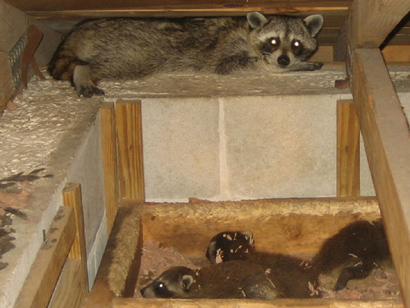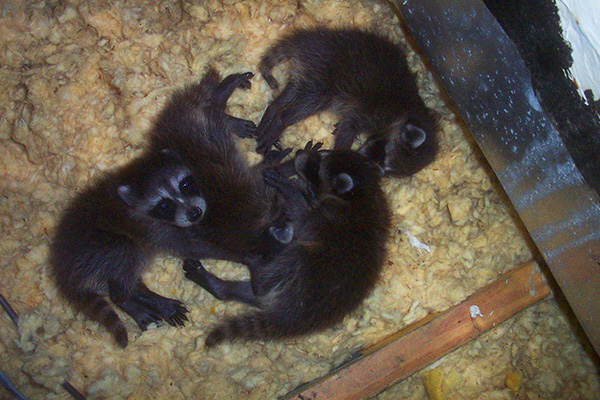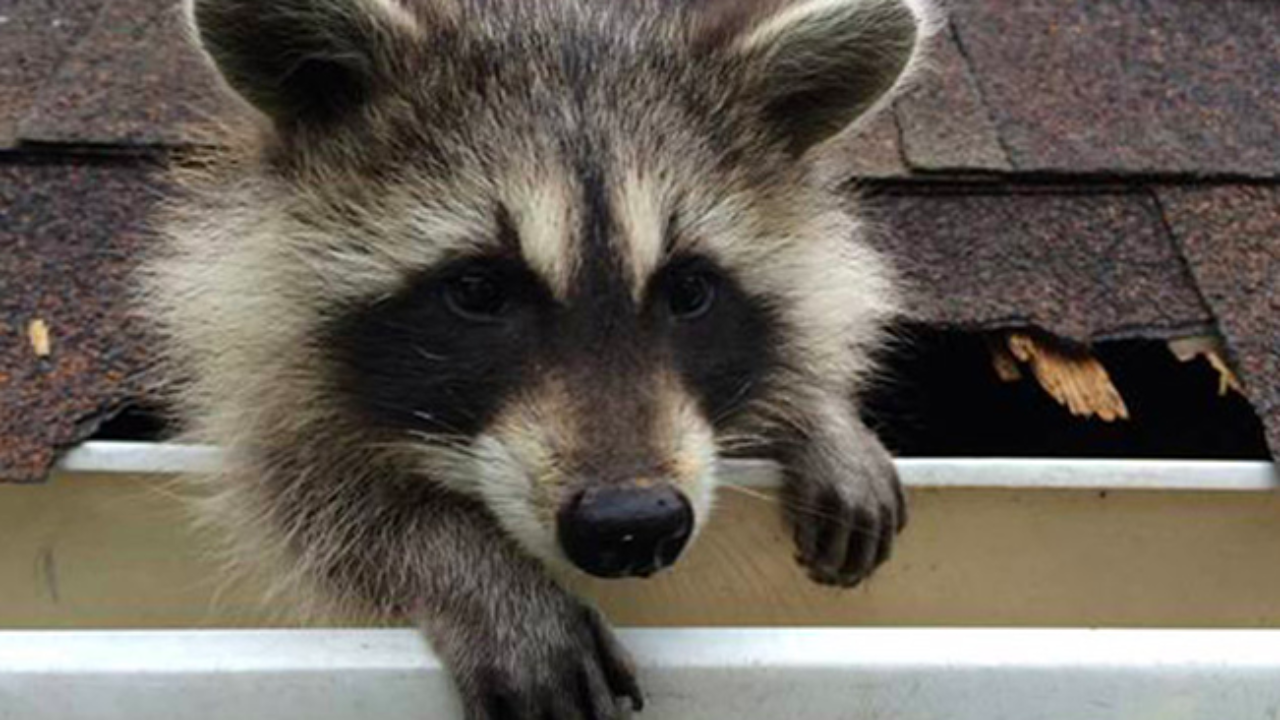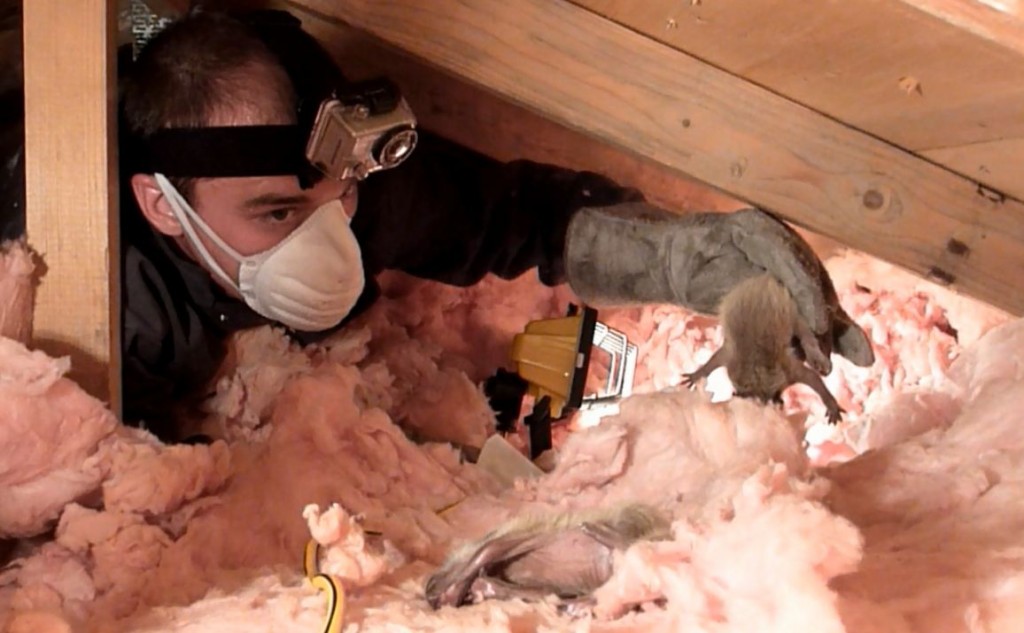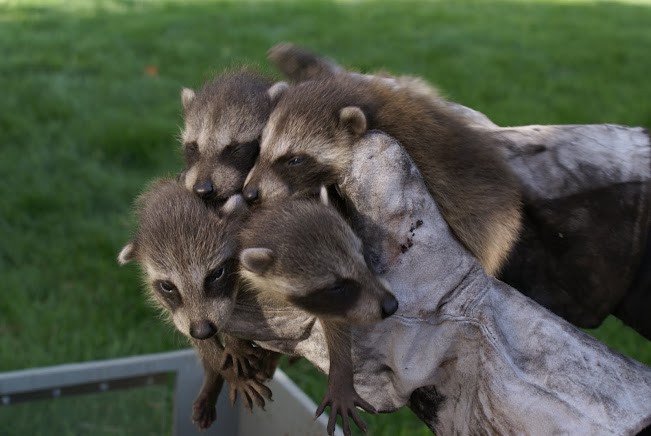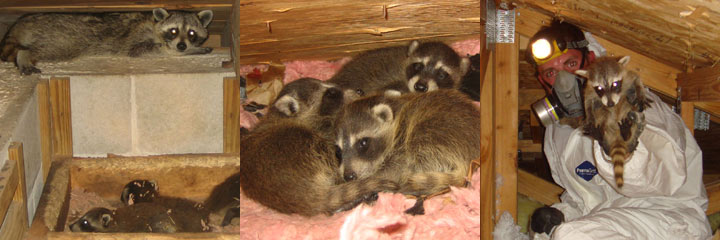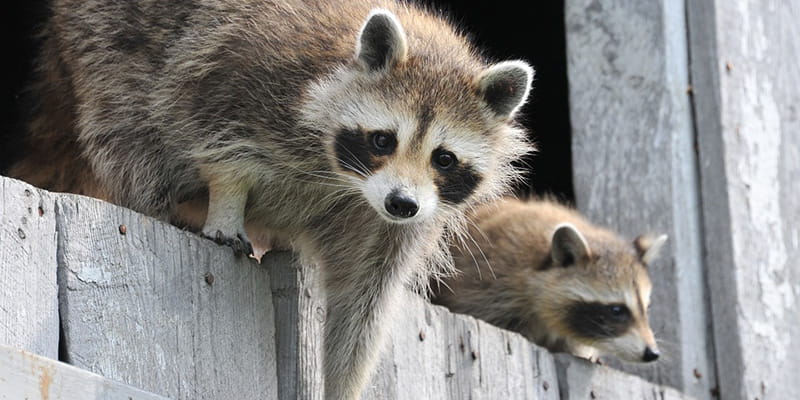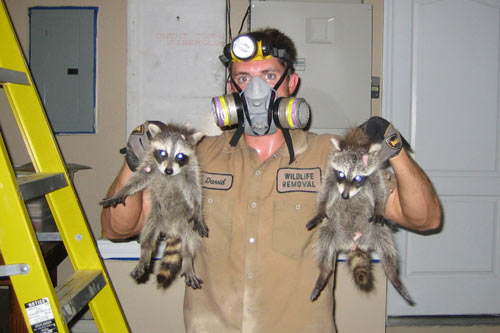The mother raccoon usually gives birth shortly after moving into the attic within 1 2 weeks and then spends about 10 weeks nursing the baby raccoons.
Mother raccoon out of attic babies still around.
They will die in there without their mother and then you ll have carcasses and a bad smell to clean up.
Search the attic carefully and find and remove the litter of baby raccoons by hand and place in sack.
When you see a raccoon out during the daytime you must note if its behaviour appears abnormal.
Inspect the home and find the entry hole s which are very large and obvious.
Raccoons especially mothers choose to live in attics because they are warm and dry and offer protection from predators and the weather.
Mother raccoons can have their usual patterns disrupted during the spring and summer birthing season when nursing a litter of babies can force mother raccoons to forage for their own food during daylight hours.
If you have young raccoons in your attic you will need to modify your removal methods to better suit the scenario.
They take great care of their babies.
Most mothers choose a spot to rear young during january or february and approximately 60 days later they give birth.
After about twelve weeks the young have grown large enough that they start to follow the mother outside of the nest area the nest is usually in a tree hollow or an attic and outside where they learn from her how to forage for food and where.
The mother freaked so he let her out.
The kits will still be in the nest inside your home.
Then at 10 weeks she starts to take the young out at night to forage.
There were 4 baby raccoons but one had died.
Attics are also often close to food sources such as trash cans and pet food.
The nest of baby raccoons must be found removed and the mother trapped.
If you have animals in your attic 99 of the time it is spring time and the animal is a mother preparing to give birth or already nursing her young.
When the babies are young they stay in a nest while the mother raccoon goes and forages for extra food to make enough milk to feed them.
My husband started feeding the babies.
Contact a wildlife removal service immediately to deal with the issue.
The raccoon mother is simply trying to find a warm place for her babies.
This is the shortened version.
You might see the adult female.
Here are the general steps for removing raccoons from an attic.
While it will prevent them from wandering throughout your home the mother and babies will starve to death in your attic space.
Typically they have a litter of 3 6 young.
Females seek out enclosed areas to raise their babies.
The story is long.
You can t seal up a home when you have waited for the mother to leave.
Mother raccoon with babies.
If you don t properly remove the baby raccoons from the attic they will suffer as they starve to death then die and rot in your attic creating a strong odor.
She took one baby.
My husband trapped the mom and put her in a dog crate with the babies.
The mother was still in the attic.
Raccoons mean no harm by living in your attic.

